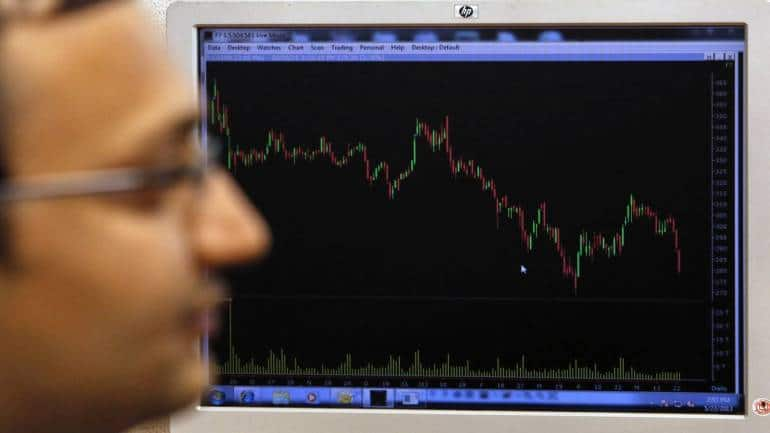Find out when Implied Volatility is high or low to trade options profitably
Best way to deal with extremes in IVs is by instantly applying a Trailing Stop Loss mechanism to trading and start locking profits as soon as they are in sight.
SHUBHAM AGARWAL | 27-Jun-20
Reading Time: 3 minutes

Implied Volatility is no more a black box term for most of our options traders now. Still, let us begin with a basic definition of it. Option Premium (Call/Put) is made up for five variables viz. Underlying Price, Strike Price, Time to Expiry, Interest Rate & Volatility. Now with first four of the five factors being publicly available information, there would be no debate on its input value.
Last but not the least the Volatility figure could be debated over. So, instead of debating over it given the option premium which is a market derived price we calculate this figure by back calculating the Volatility for the given premium by feeding in the rest of the four known variables.
This volatility is not the volatility of the stock derived from its historical returns, it is Implied from the premium hence, we name it Implied Volatility. Apart from being a Back Calculated figure there is one more element which sets Implied Volatility apart from Historical Volatility .
That element is Implied Volatility such calculated could now be used as a proxy to market consensus Forecasted Volatility. This may have its references from the history of stock prices but would more importantly have expectations in terms of volatility from the future.
Coming down to the subject matter of the discussion, Implied Volatility or IV as it is popularly known has a mean reverting characteristic. Meaning, it would always be in a range. The Range might keep moving up and down but it still would remain in a range.
This is a statistically proven fact by running a test called Co-Integration. If you do not have access to calculated historical IV values use a proxy of INDIA VIX (index of Nifty VIX IVs). Just by looking at it one can make this fact out that IVs are range bound across time.
Now let us understand how Implied Volatility correlates with the underlying. Negative, this is what the relationship is of the Underlying and Implied Volatility. Why?
Well, it is because of simple of law of nature Building something takes time there by lower expected volatility associated with rising underlying (we are referring to equity and Indices). While, breaking something can be much faster, hence higher expected volatility associated with falling underlying.
But How do we Find the extremes?
To find the extreme just plot implied volatility (can be found using many free software on the web) of nearest strike Call/Put of any underlying for at least 60 preceding days (approximation for 3 expiries). Just visually observe the high point and low point. One would easily realize the extreme as well as the mean reverting characteristic.
Over and above that there are popular gauges used would wide like IVR, IVP, which would denote in just one number if we are in the high bracket or low bracket of volatility. Finding value of these gauges is also not that difficult any value of either of these below 20 is low IV bracket and above 80 is high IV bracket.
Once we know that the IV is in an extreme zone, prepare for an opposite move in the Underlying. Meaning with IV at upper extreme typically we would have falling underlying but we would be nearing a bottom. Similarly a top would more of than not coincide with the lower extreme of the IV.
Just like right now, if we look at the since COVID-19 times we are running at one of the lowest readings in Nifty IVs.
So, do we sell everything? not really.
Best way to deal with extremes in IVs is by instantly applying a Trailing Stop Loss mechanism to trading and start locking profits as soon as they are in sight. No doubt, this would lead to some premature exits but at least it will make sure that we have addressed the known obstacle and limited any possibility of a big disaster.
The author is CEO & Head of Research at Quantsapp
Disclaimer: The views and investment tips expressed by investment experts on Moneycontrol.com are their own and not that of the website or its management. Moneycontrol.com advises users to check with certified experts before taking any investment decisions.
Learn and read more about implied volatility from Quantsapp classroom which has been curated for understanding of volatility skew from scratch, to enable option traders grasp the concepts practically and apply them in a data-driven trading approach.
Recent Articles

Option writing before the Budget: Why calendars beat naked shorts
17-Jan-26

How smart money trades before the Budget: Shubham Agarwal
10-Jan-26

Change yourself, change your result, says market trader Shubham Agarwal
06-Jan-26

Knowing when not to adjust trades: Shubham Agarwal
27-Dec-25

How to make profit when markets go sideways: Shubham Agarwal
20-Dec-25

Beyond Panic: Take control when your derivatives trade turns red, says Shubham Agarwal!
13-Dec-25

Evolve Your Trade: The missing step in most trading systems: Shubham Agarwal
06-Dec-25

Best trending option trading strategies: Shubham Agarwal
29-Nov-25

SHUBHAM AGARWAL is a CEO & Head of Research at Quantsapp Pvt. Ltd. He has been into many major kinds of market research and has been a programmer himself in Tens of programming languages. Earlier to the current position, Shubham has served for Motilal Oswal as Head of Quantitative, Technical & Derivatives Research and as a Technical Analyst at JM Financial.
Recent Articles

Option writing before the Budget: Why calendars beat naked shorts
17-Jan-26 08:20:00

How smart money trades before the Budget: Shubham Agarwal
10-Jan-26 08:14:00

Change yourself, change your result, says market trader Shubham Agarwal
06-Jan-26 14:58:00

Knowing when not to adjust trades: Shubham Agarwal
27-Dec-25 10:58:00

How to make profit when markets go sideways: Shubham Agarwal
20-Dec-25 12:14:00

Beyond Panic: Take control when your derivatives trade turns red, says Shubham Agarwal!
13-Dec-25 09:12:00

Evolve Your Trade: The missing step in most trading systems: Shubham Agarwal
06-Dec-25 20:43:00











